Vegan Globetrotter is supported by our audience. When you purchase through one of our links, we may earn a small affiliate commission. As an Amazon Associate I earn from qualifying purchases. Your cost is not affected.
==================
The shift towards induction cooking represents a crucial step forward in a world increasingly conscious of environmental impact and indoor air quality. Traditional gas and electric stoves release harmful pollutants into the air. But with induction cooktops, you get a cleaner, safer, and more efficient alternative.
Switching from gas to induction stoves greatly affects indoor air quality. It reduces exposure to nitrogen dioxide and carbon monoxide, which can seriously affect your health. This article explores how induction cooking reduces indoor air pollution, enhances cooking experiences, and promotes a healthier home environment.
Induction Cooking: Reduces Indoor Air Pollution: Embracing Cleaner Kitchen Environments
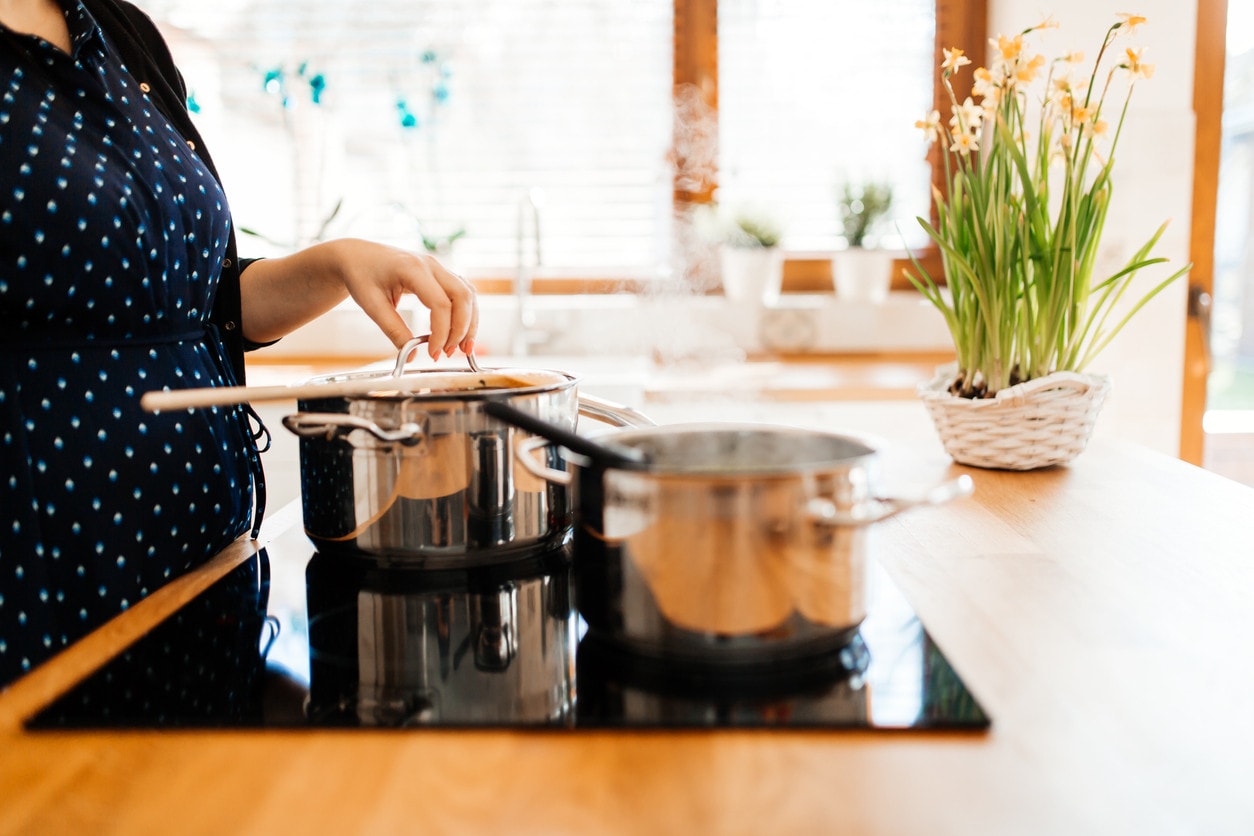
Induction cooking represents a significant advancement in kitchen technology. It offers a cleaner and more efficient way to prepare food. As awareness of indoor air quality becomes increasingly crucial for health, induction cooktops are gaining attention due to their potential to minimize harmful pollutants in your home.
Traditional cooking methods, especially gas stoves, emit pollutants such as nitrogen dioxide, carbon monoxide, and formaldehyde. These pollutants can exacerbate respiratory conditions. By utilizing electromagnetic fields to heat pots and pans directly, induction cooking keeps the air cleaner. It produces less ambient heat and doesn’t rely on combustion.
Key Takeaways
- Induction cooktops generate heat using a high-frequency induction coil beneath the cooking surface. Switching to induction cooking from gas or electrical resistance offers several benefits, from energy efficiency to precise control.
- Induction cooking introduces a significant change in indoor air quality by minimizing the levels of pollutants typically released during traditional cooking methods.
- When you switch to induction cooking, you’re making a big difference in reducing indoor air pollution and the health risks that come with it. This impacts your immediate environment and has broader implications for your long-term well-being.
- When switching to induction cooking, you must assess cookware compatibility, understand maintenance needs, and navigate potential adoption barriers, ensuring a smooth transition.
- When you switch to induction cooking, you’re enhancing your culinary experience and contributing positively to the environment. The future of induction cooking looks promising, from automatic shut-off features to timer functions.
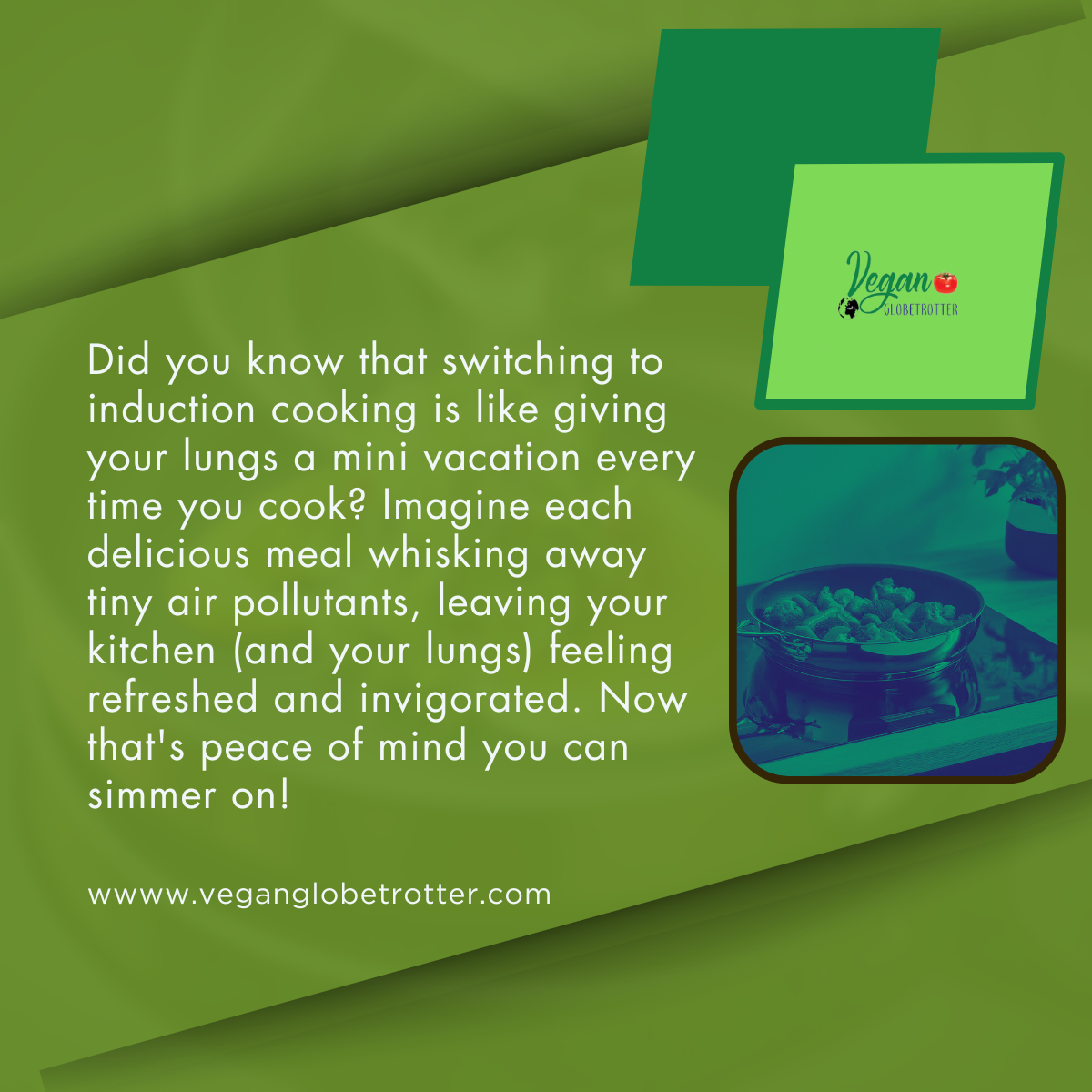
Mastering the Fundamentals of Induction Cooking
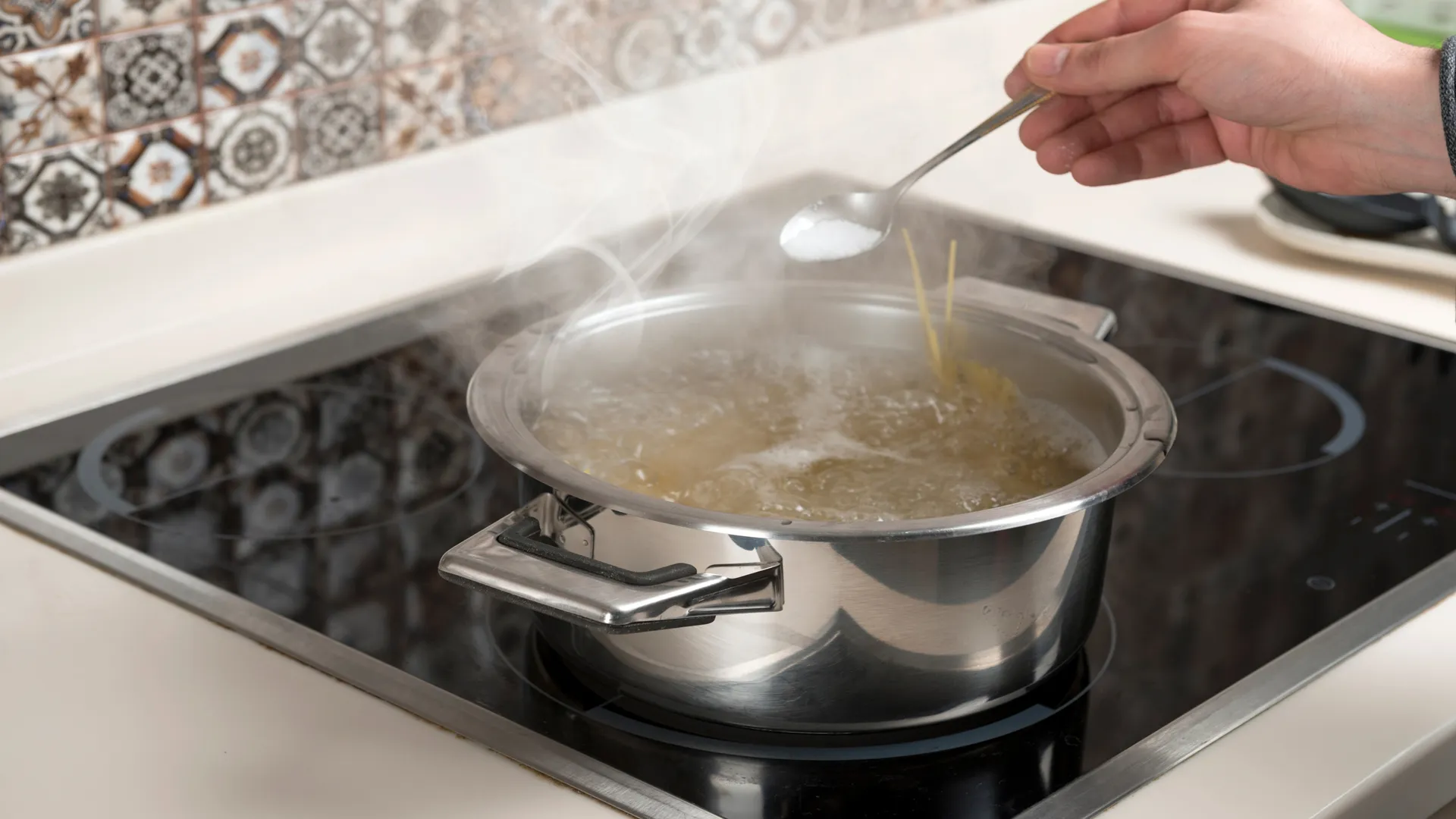
Induction cooking represents a leap in culinary technology that offers increased efficiency and precision. This method hinges on electromagnetic fields to directly heat cookware, making it distinct from conventional gas or electric stoves.
Principles of Induction Heating
Induction cooktops generate heat using a high-frequency induction coil beneath the cooking surface. When you turn on an induction burner, it produces an electromagnetic field that only heats ferromagnetic cookware. This method ensures that the cookware becomes the heat source, allowing for rapid and controlled cooking temperatures.
Components of Induction Cooktops
The main components of an induction cooktop include:
- Induction Coil (Copper Wire): Creates an alternating magnetic field.
- Glass Ceramic Surface: A durable, easy-to-clean platform supports the cookware.
- Magnetic Cookware: Typically made of iron or stainless steel, required for the induction process.
- Control Panel: Allows you to adjust temperature and power settings with precision.
Advantages of Induction Cooking Over Traditional Methods
Switching to induction cooking from gas or electrical resistance offers several benefits:
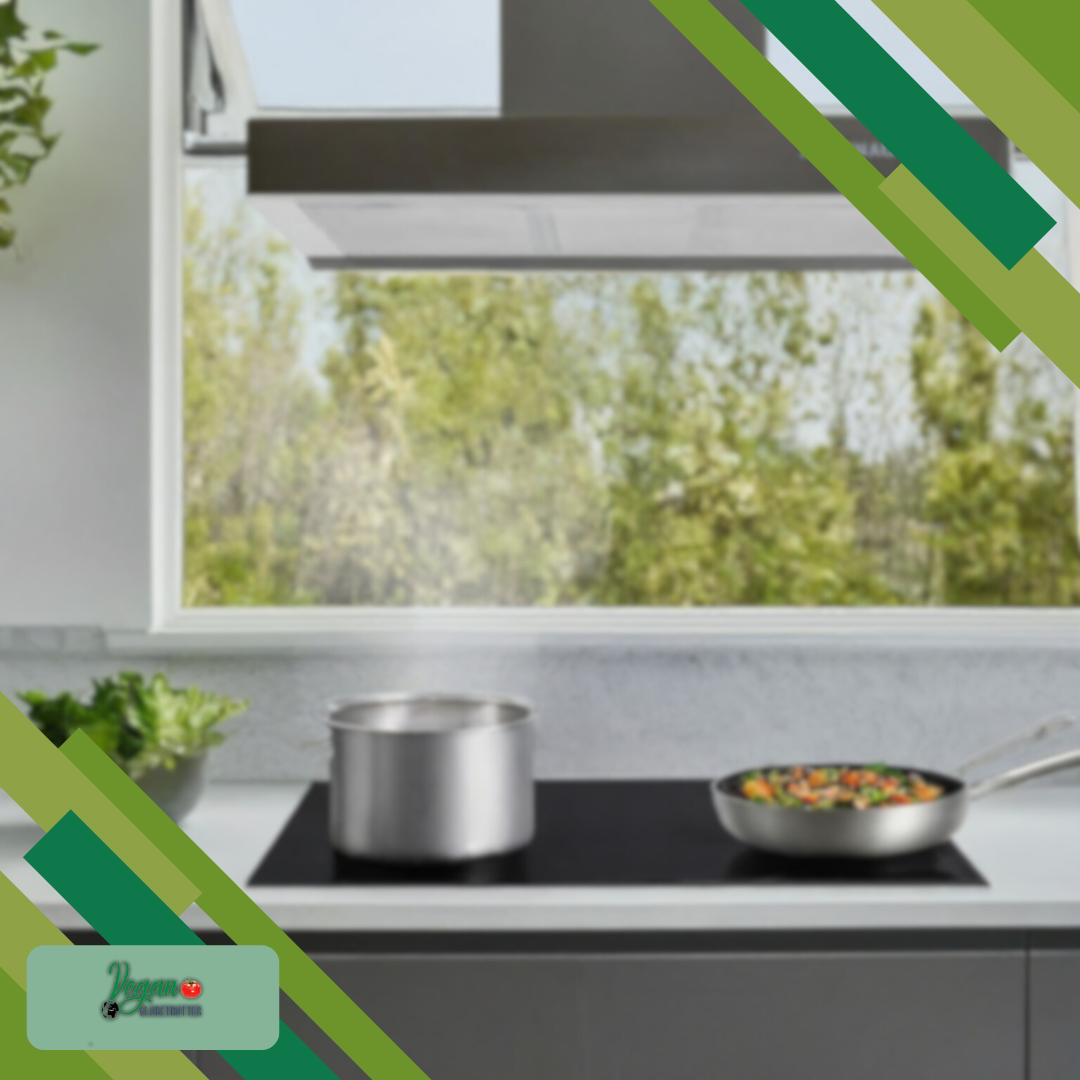
- Energy Efficiency: Induction cooking is more energy-efficient, as it reduces heat loss by targeting the cookware directly.
- Safety: The cooking surface remains cool, minimizing burn risks.
- Speed: It can heat food faster, which can potentially lead to energy savings.
- Precise Control: You can achieve instant temperature changes, ideal for tasks requiring careful heat management.
Impact of Induction Cooking on Indoor Air Quality
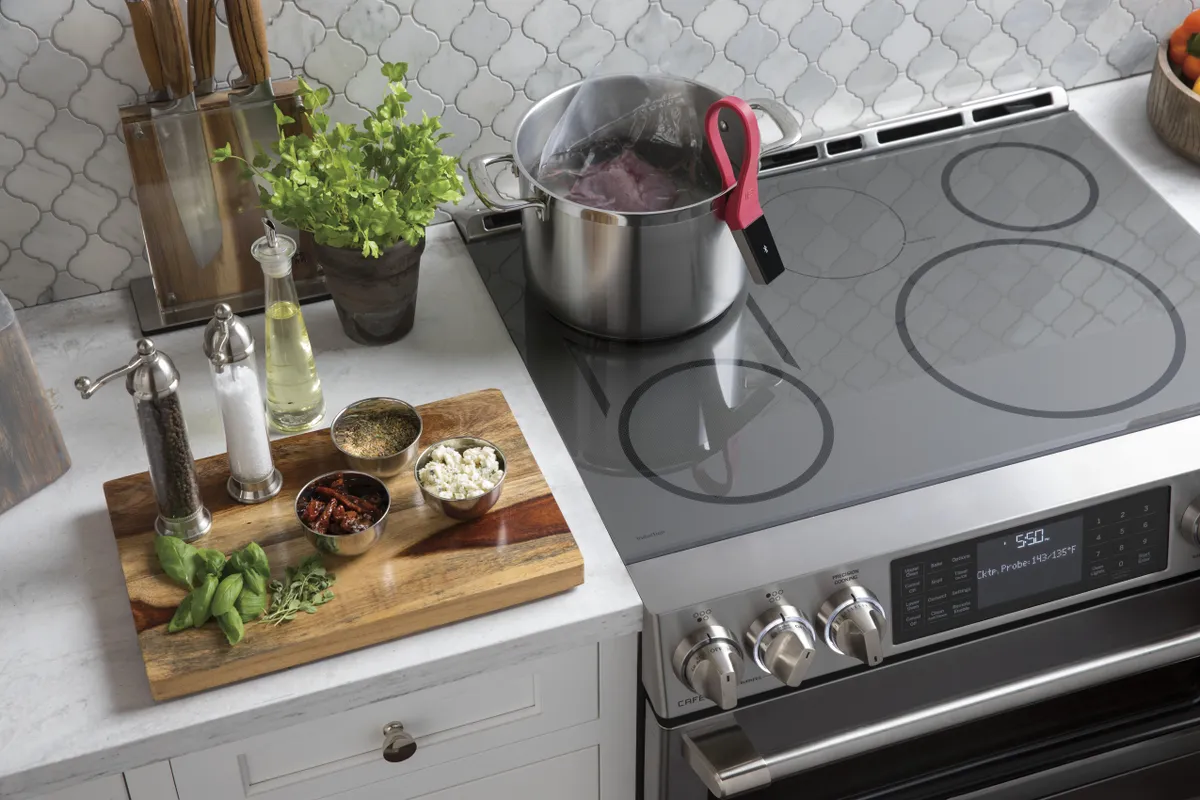
Induction cooking introduces a significant change in indoor air quality by minimizing the levels of pollutants typically released during traditional cooking methods.
Comparison of Emission Levels
Induction cooktops operate on electricity and produce heat through magnetic fields, directly heating your cookware rather than the air around it. This focused heating method results in lower particulate matter (PM) and nitrogen dioxide (NO2) emissions than gas or electric coils. Traditional cooking can increase indoor pollution levels, sometimes even higher than those outdoors.
Reducing Exposure to Harmful Pollutants
Switching to induction cooking can help reduce your exposure to harmful pollutants like carbon monoxide (CO), PM (particulate matter), and volatile organic compounds (VOCs).
For instance, cooking with a gas stove releases these pollutants into your home’s air, possibly affecting respiratory health. Induction cooking results in fewer indoor air pollutants, providing a healthier environment within your home.
Here’s an informational video about pollutants from gas stoves.
By: Distilled
Did You Know?
Pairing induction cooking with a proper ventilation system can further enhance air quality in your home. Ventilation systems help in mitigating any pollutants that may still be present. They also effectively reduce humidity and odors, maintaining a more consistent and clean air profile indoors.
Induction Cooking: Health Implications
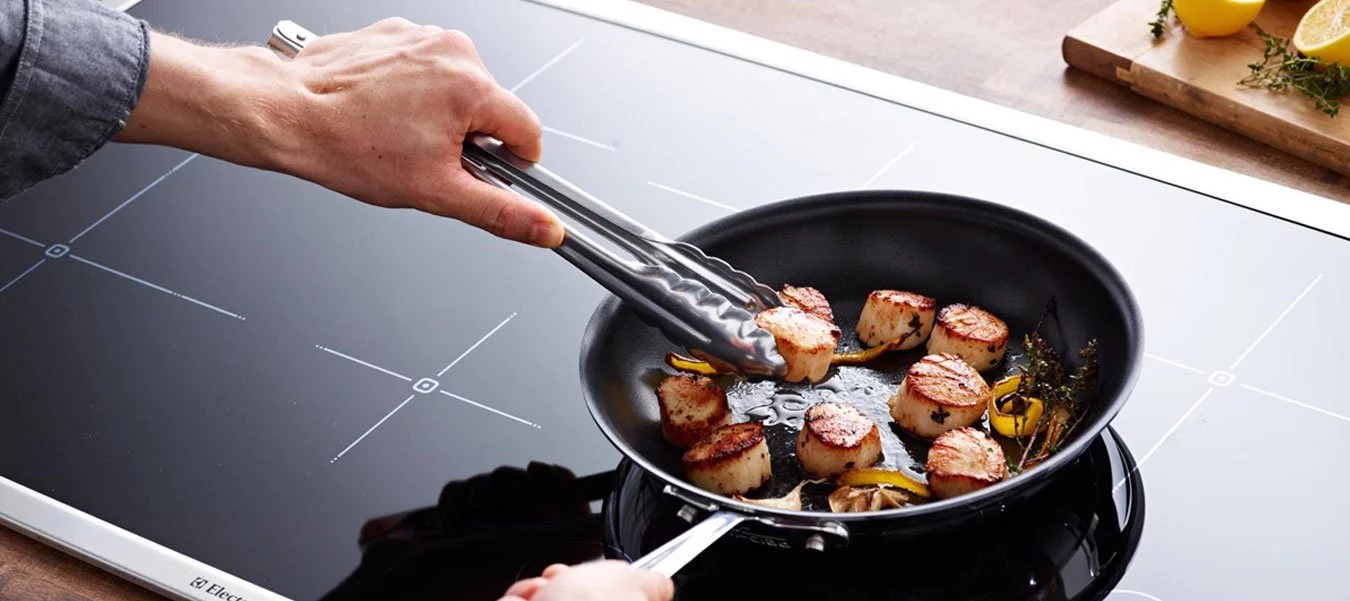
When you switch to induction cooking, you’re making a big difference in cutting down indoor air pollution and all the health risks that come with it.
Not only does this impact your immediate environment, but it also has broader implications for your long-term well-being.
Effects of Reduced Indoor Pollution on Health
By adopting induction cooking, you minimize your exposure to harmful pollutants commonly released by traditional cooking methods.
For instance, induction stoves do not combust fuel, cutting down on the smoke that carries health risks, specifically known to affect the respiratory system, offering you and your family an environment with cleaner air to breathe.
Long-Term Health Benefits
The long-term health benefits of reduced exposure to indoor air pollution through induction cooking are significant. Persistent exposure to pollutants like carbon monoxide and particulates has been linked to respiratory health deterioration over time.
Reducing these pollutants in your kitchen can help lower the risk of chronic respiratory diseases like asthma and COPD. Furthermore, cleaner air in your home can contribute to cardiovascular health and potentially reduce the risk of certain cancers.
Consumer Considerations
When switching to induction cooking, you must assess cookware compatibility, understand maintenance needs, and navigate potential adoption barriers, ensuring a smooth transition.
Evaluating Cookware Compatibility
Induction cooktops need pots and pans made of or containing magnetic materials like iron or stainless steel.
Maintenance and Care
Maintaining an induction cooktop is relatively straightforward. Keep the surface clean by wiping it with a soft cloth, avoiding abrasive cleaners to shield the cooktop from scratches.
Spills won’t burn onto the surface like traditional cooktops, so you’ll find cleaning easier. Remember that induction cooktops are electronic and may require professional servicing for internal issues.
Adoption Barriers and Solutions
Initial costs and kitchen modifications can be significant barriers. Weigh the long-term energy-saving benefits against the upfront investment.
Should remodeling be required for installation, seek professional guidance to ensure your kitchen’s electrical setup is adequate for the typically required 240-volt outlet. Overcoming these barriers can reduce indoor air pollution and contribute to a cleaner home environment.
Did You Know?
No matter how you cook, some pollutants can still come from the food as it cooks, especially at high temperatures. This includes fine particulate matter (PM2.5) from frying or burning.
Environmental Impact of Induction Cooking
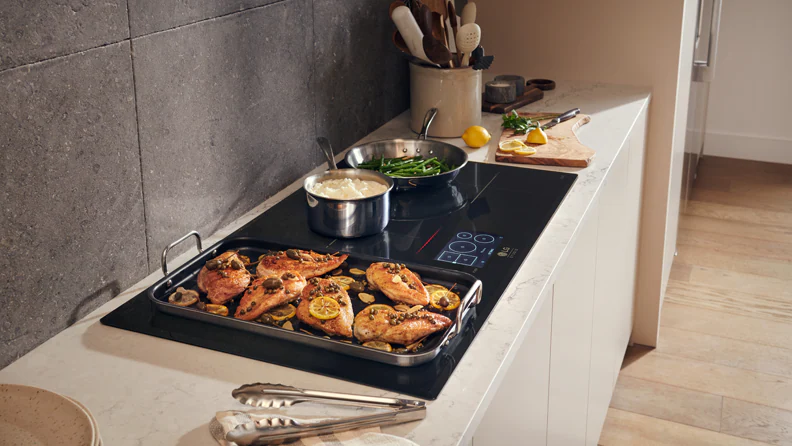
When you switch to induction cooking, you’re enhancing your culinary experience and contributing positively to the environment. This technology can reduce your carbon footprint.
Carbon Footprint Analysis
Induction cooking is lauded for its efficiency; it directly heats your cookware rather than the air around it. This precision means less wasted energy and, in turn, a lower carbon footprint than traditional gas and electric stoves.
Research suggests that by adopting induction cooking, you can play a part in lowering levels of harmful pollutants in your home, which positively affects the larger environment. It’s a step towards fighting climate change, as less energy consumption translates to less reliance on fossil fuels.
Sustainability of Induction Technology
Induction cooktops are not just about immediate efficiency – they’re part of a long-term sustainability strategy. Their design life is generally longer than traditional stoves, meaning less waste and fewer resources are needed for manufacturing replacements.
Furthermore, induction technology is compatible with renewable energy sources. As your home shifts toward greener power options like solar or wind, your cooktop can seamlessly run on this clean electricity, thus supporting a more sustainable future. By choosing induction, you’re opting for a path that conserves energy and aligns with sustainable living goals.
Future of Induction Cooking: Features
The future of induction cooking looks promising! Here are some trends that show why it’s becoming so popular:
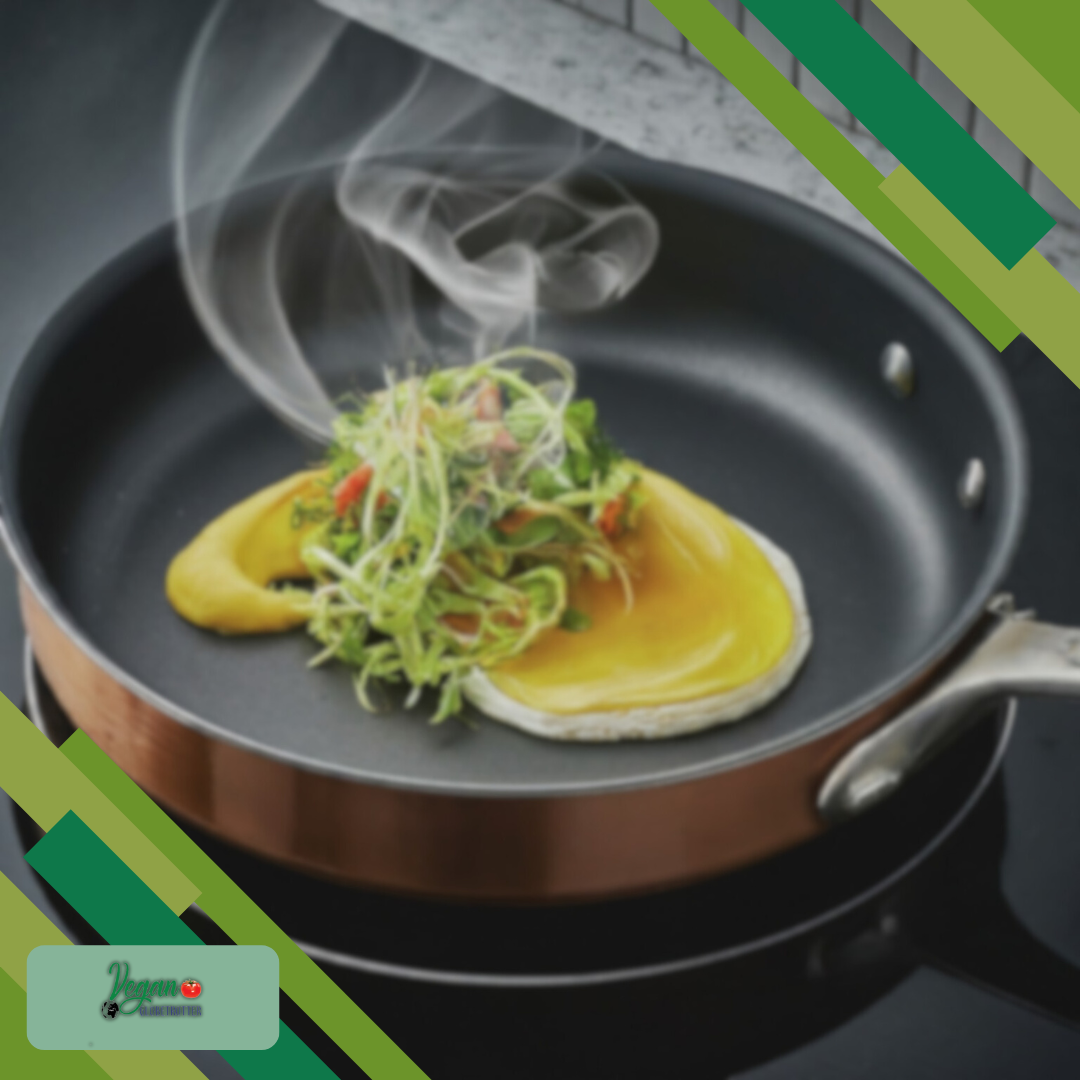
- Automatic Shut-off: This is a crucial safety feature. The cooktop will automatically turn off after a set period of inactivity, even if you forget. This prevents accidents like overheating or fires.
- Pan Detection: The cooktop won’t activate unless it detects a compatible pan in the cooking zone. This eliminates the risk of accidentally turning on a burner and leaving it on.
- Residual Heat Indicator: The cooktop surface doesn’t get hot during normal operation. However, the cookware will retain heat after use. An indicator light will warn you if the cooking zone is still hot even after the burner is off, preventing accidental burns.
- Child Lock: This feature lets you lock the controls to prevent curious children from turning on the cooktop or changing settings.
- Overheating Protection: In case of a malfunction or improper use, the cooktop may have built-in sensors to detect overheating and automatically shut down to prevent damage.
Some models may offer additional safety features like:
- Boil-over Detection: Automatically shuts off the burner if a pot boils over and spills onto the cooktop surface.
- Timer Function: This lets you set a timer for your cooking and automatically turns off the cooktop when the time is up, preventing forgotten food from scorching.
All these features make induction cooktops a safe and reliable choice for your kitchen.
Here’s an additional video about the air quality improvement from using induction cooktops.
By: ICAN SiliconValley
Embracing Induction Cooking for Cleaner Kitchens and a Greener Future
Induction cooking represents a significant leap forward in kitchen technology, offering a cleaner, safer, and more efficient way to prepare meals. As concerns over indoor air quality and environmental impact continue to grow, adopting induction cooktops is crucial to mitigating indoor air pollution. By cutting down on exposure to harmful pollutants like nitrogen dioxide and carbon monoxide, induction cooking not only makes your home healthier but also chips in towards broader environmental sustainability goals.
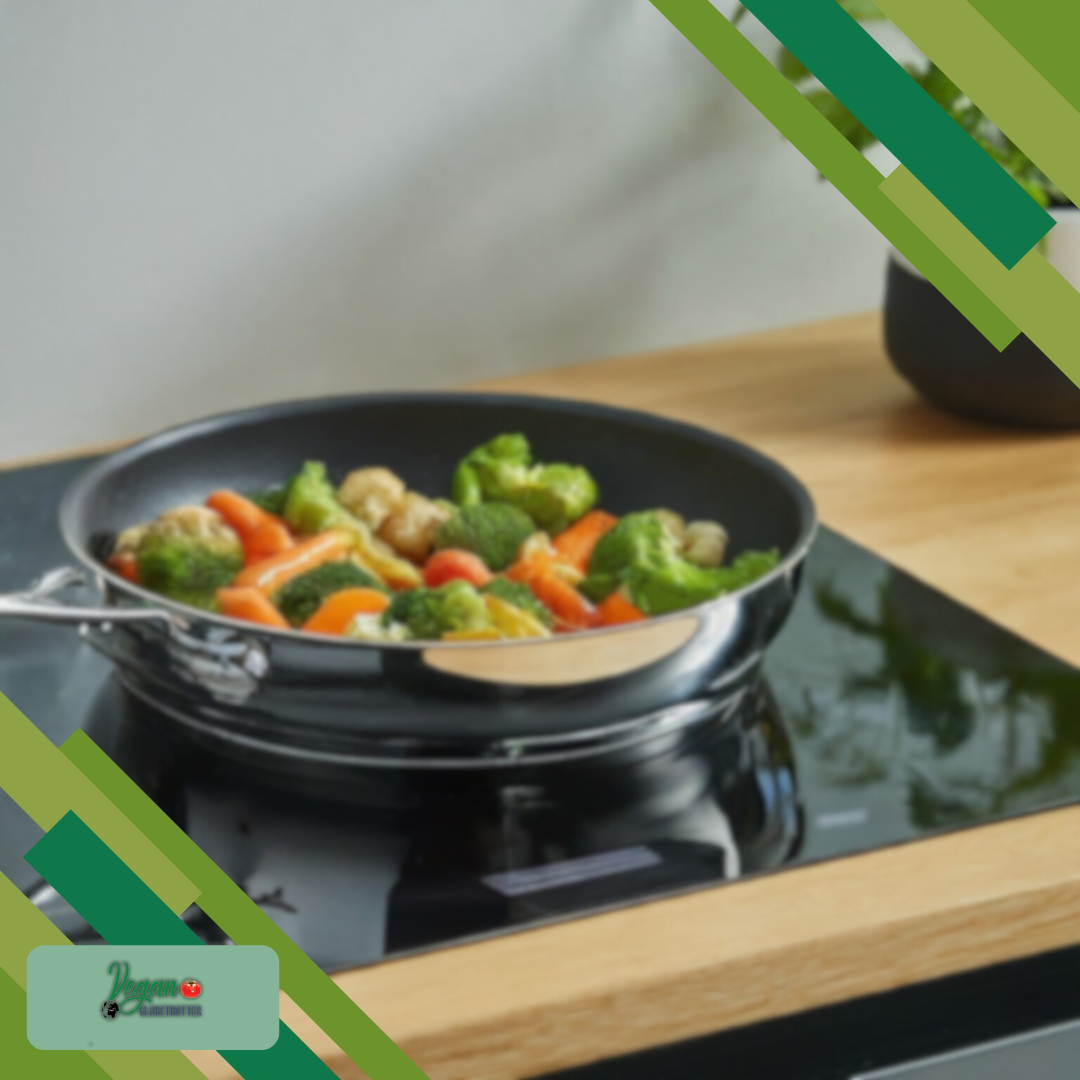
This innovative technology makes cooking easier and more enjoyable and meets the increasing demand for eco-friendly and energy-efficient appliances. Induction cooktops also offer features that will help you as we navigate towards a future where sustainability and health take precedence; induction cooking stands out as a beacon of progress in the culinary world.
Embracing this cleaner kitchen technology benefits individuals and families and leaves a positive impact on the planet we call home. So, whether you’re a seasoned chef or a cooking enthusiast, consider switching to induction cooking and moving towards cleaner kitchen environments and a greener future.
Frequently Asked Questions
How Does Induction Cooking Impact Indoor Air Quality Compared to Gas Stoves?
Induction cooktops do not combust fossil fuels. Thus, they do not emit carbon monoxide or other combustion pollutants that can impair indoor air quality, making them a cleaner alternative to gas stoves.
In What Ways Does Induction Cooking Offer Environmental Advantages?
Induction cooktops are more energy-efficient, boasting faster heating times and precise temperature control. This helps reduce energy waste and can contribute to lower greenhouse gas emissions when powered by renewable energy sources, which means it has an overall positive environmental impact.
Are There Any Risks Associated With the Electromagnetic Fields Produced by Induction Cooktops?
Induction cooktops do produce low-level electromagnetic fields. However, research suggests that exposure at levels associated with household cooking appliances is typically far below the thresholds considered to be harmful. Always follow the manufacturer’s guidelines for use and maintenance.
Find Us on Social Media
Facebook: VeganGlobetrotter Join us on our Facebook page, VeganGlobetrotter, where we share mouthwatering plant-based recipes and tips to inspire your vegan lifestyle.
Instagram: _veganglobetrotter Follow us on Instagram at _veganglobetrotter to embark on a visual journey of delectable vegan dishes.
Pinterest: theveganglobetrotter Dive into the world of plant-based goodness and wellness with our Pinterest account, theveganglobetrotter.
Twitter: VeganGlobetrot Stay up-to-date with the latest vegan trends, insightful articles, and exciting updates by following us on Twitter at VeganGlobetrot.

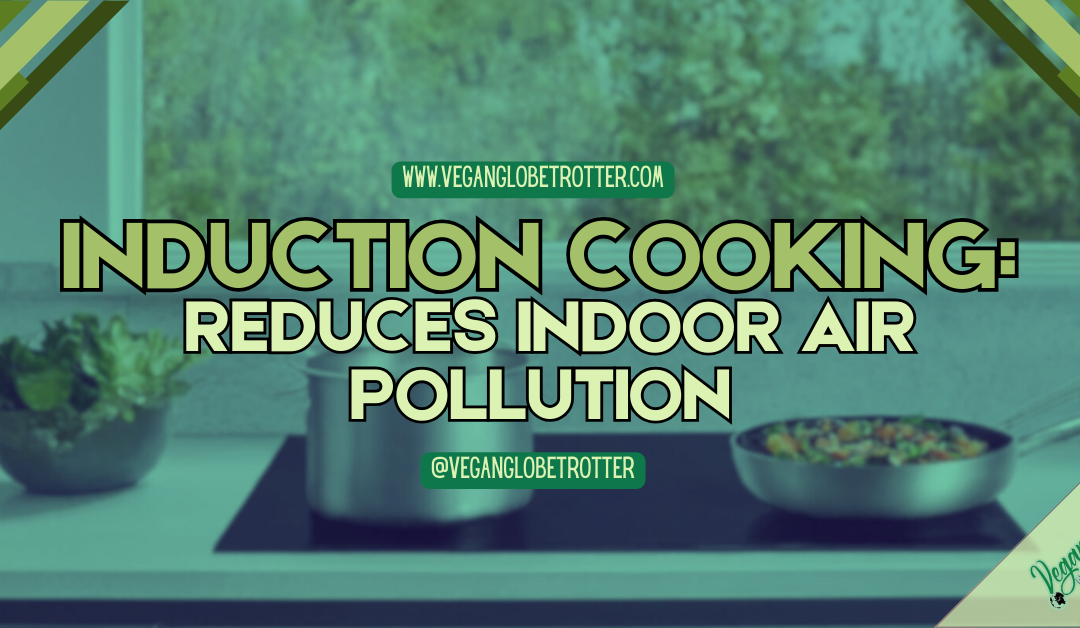

Don't miss out
when new recipes and information are added!
Join our newsletter for free recipes,
healthy living inspiration, and special offers
You have Successfully Subscribed!